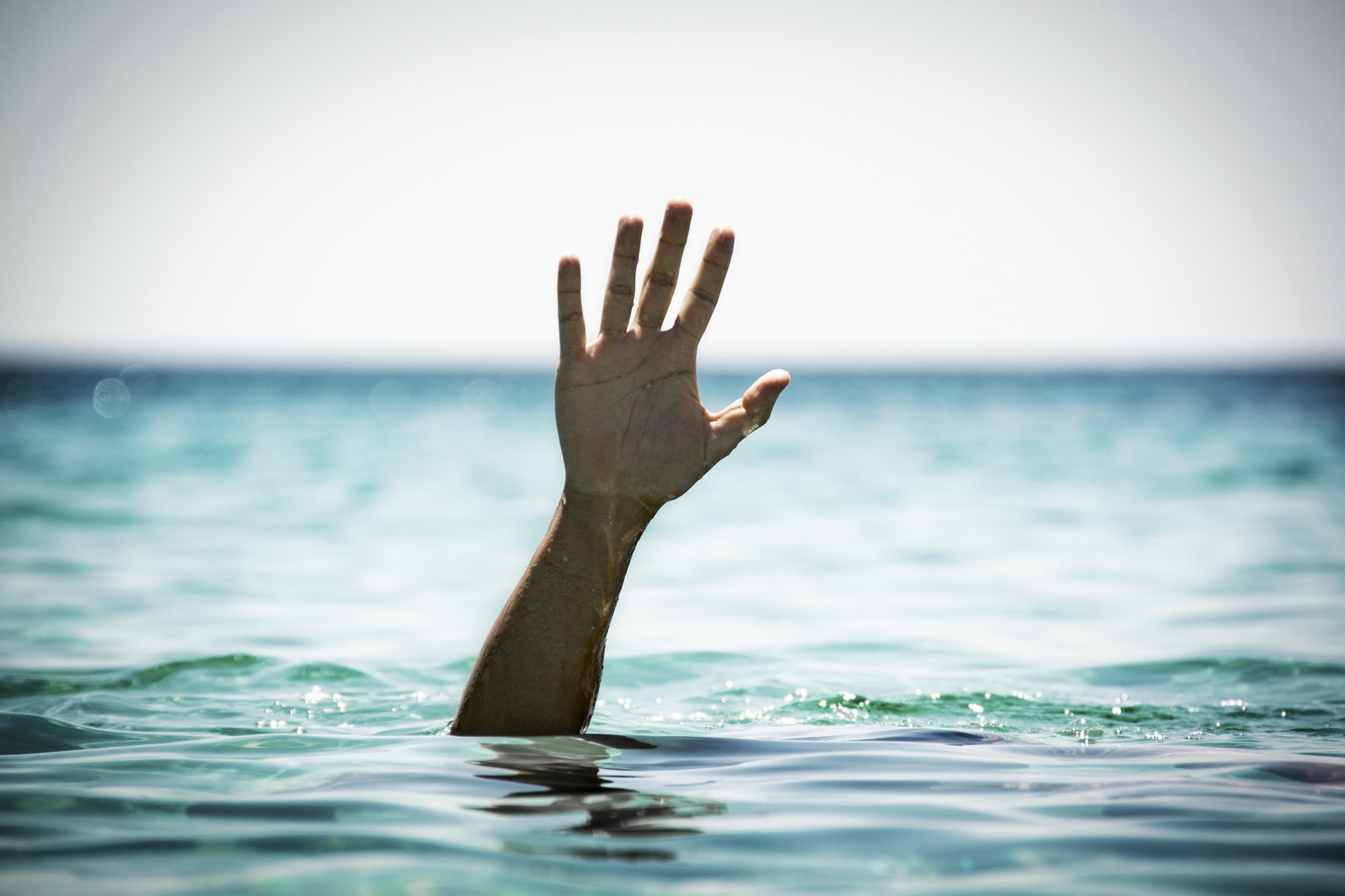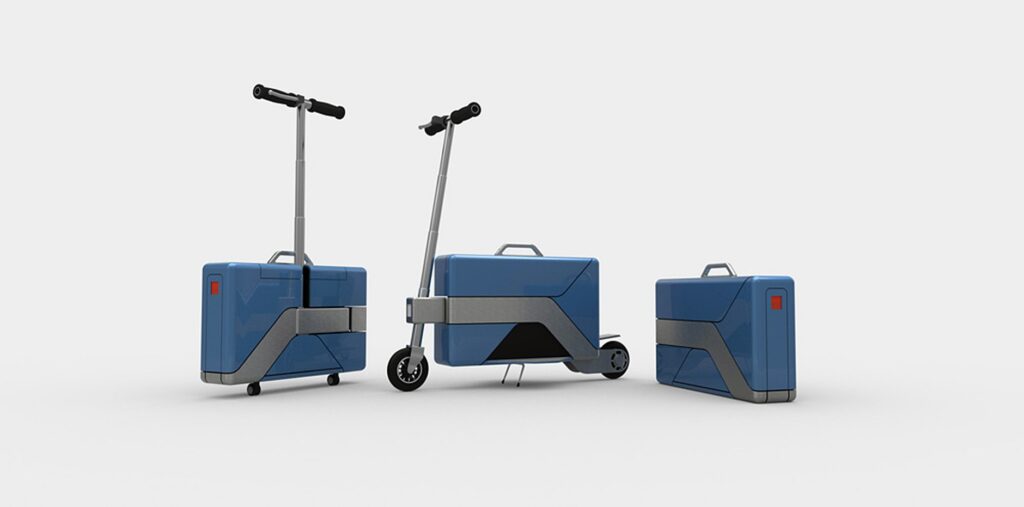Drowning Doesn’t Look Like Drowning
In 10 percent of drownings, adults are nearby but have no idea the victim is dying. Here’s what to look for.
The new captain jumped from the deck, fully dressed, and sprinted through the water. A former lifeguard, he kept his eyes on his victim as he headed straight for the couple swimming between their anchored sportfisher and the beach. “I think he thinks you’re drowning,” the husband said to his wife. They had been splashing each other and she had screamed but now they were just standing, neck-deep on the sand bar. “We’re fine; what is he doing?” she asked, a little annoyed. “We’re fine!” the husband yelled, waving him off, but his captain kept swimming hard. ”Move!” he barked as he sprinted between the stunned owners. Directly behind them, not 10 feet away, their 9-year-old daughter was drowning. Safely above the surface in the arms of the captain, she burst into tears, “Daddy!”
How did this captain know—from 50 feet away—what the father couldn’t recognize from just 10? Drowning is not the violent, splashing call for help that most people expect. The captain was trained to recognize drowning by experts and years of experience. The father, on the other hand, had learned what drowning looks like by watching television. If you spend time on or near the water (hint: that’s all of us) then you should make sure that you and your crew know what to look for whenever people enter the water. Until she cried a tearful, “Daddy,” she hadn’t made a sound. As a former Coast Guard rescue swimmer, I wasn’t surprised at all by this story. Drowning is almost always a deceptively quiet event. The waving, splashing, and yelling that dramatic conditioning (television) prepares us to look for is rarely seen in real life.
The Instinctive Drowning Response is what people do to avoid actual or perceived suffocation in the water. And it does not look like most people expect. There is very little splashing, no waving, and no yelling or calls for help of any kind. To get an idea of just how quiet and undramatic from the surface drowning can be, consider this: It is the No. 2 cause of accidental death in children, ages 15 and under (just behind vehicle accidents)—of the approximately 750 children who will drown next year, about 375 of them will do so within 25 yards of a parent or other adult. According to the CDC, in 10 percent of those drownings, the adult will actually watch the child do it, having no idea it is happening. Drowning does not look like drowning— Dr. Pia, in an article in the Coast Guard’s On Scene magazine, described the Instinctive Drowning Response like this:
“Except in rare circumstances, drowning people are physiologically unable to call out for help. The respiratory system was designed for breathing. Speech is the secondary or overlaid function. Breathing must be fulfilled before speech occurs.
Drowning people’s mouths alternately sink below and reappear above the surface of the water. The mouths of drowning people are not above the surface of the water long enough for them to exhale, inhale, and call out for help. When the drowning people’s mouths are above the surface, they exhale and inhale quickly as their mouths start to sink below the surface of the water.
Drowning people cannot wave for help. Nature instinctively forces them to extend their arms laterally and press down on the water’s surface. Pressing down on the surface of the water permits drowning people to leverage their bodies so they can lift their mouths out of the water to breathe.
Throughout the Instinctive Drowning Response, drowning people cannot voluntarily control their arm movements. Physiologically, drowning people who are struggling on the surface of the water cannot stop drowning and perform voluntary movements such as waving for help, moving toward a rescuer, or reaching out for a piece of rescue equipment.
From beginning to end of the Instinctive Drowning Response people’s bodies remain upright in the water, with no evidence of a supporting kick. Unless rescued by a trained lifeguard, these drowning people can only struggle on the surface of the water from 20 to 60 seconds before submersion occurs.”
This doesn’t mean that a person that is yelling for help and thrashing isn’t in real trouble—they are experiencing aquatic distress. Not always present before the Instinctive Drowning Response, aquatic distress doesn’t last long—but unlike true drowning, these victims can still assist in their own rescue. They can grab lifelines, throw rings, etc.
Look for these other signs of drowning when persons are in the water:
Head low in the water, mouth at water level
Head tilted back with mouth open
Eyes glassy and empty, unable to focus
Eyes closed
Hair over forehead or eyes
Not using legs—vertical
Hyperventilating or gasping
Trying to swim in a particular direction but not making headway
Trying to roll over on the back
Appear to be climbing an invisible ladder
So if a crew member falls overboard and everything looks OK—don’t be too sure. Sometimes the most common indication that someone is drowning is that they don’t look like they’re drowning. They may just look like they are treading water and looking up at the deck. One way to be sure? Ask them, “Are you all right?” If they can answer at all—they probably are. If they return a blank stare, you may have less than 30 seconds to get to them. And parents—children playing in the water make noise. When they get quiet, you get to them and find out why.
source: slate.com
Tekintsük át a legfontosabb információkat újra. Válaszolj a kérdésekre magyarul!
1. Miért nem veszik észre gyakran a fuldoklókat?
2. Mi akadályozza meg a fuldoklókat abban, hogy felhívják magukra a figyelmet?
3. Mi az egyik leggyakoribb jele annak, ha valaki fuldoklik?
4. Hogyan lehet meggyőződni arról, hogy mi a helyzet valójában?
5. Mire kell figyelni a szülőknek?
Válaszok:
1. Mert nem olyan drámai, mint a tévében. Csendben történik. A fuldokló nem csapkod a karjaival és nem kiabál.
2. Nem tudnak segítségért kiáltani, mert a beszéd csak másodlagos funkció a légzés után. és amikor kidugják a szájukat a vízből, lélegezni próbálnak, mielőtt újra lesüllyednek.
Nem tudnak integetni, mert a karjukat ösztönösen oldalt nyújtják ki és megpróbálnak a vízre támaszkodni, hogy felemeljék a testüket és lélegezni tudjanak.
Nem csak integetni nem tudnak, hanem a megmentőjük felé közeledni vagy az életmentő felszerelés felé kinyúlni sem.
3. Az, hogy nem néznek ki úgy, mintha fuldokolnának. Lehet, hogy csak úgy néznek ki, mintha taposnák a vizet és néznek fel a fedélzetre.
4. Meg kell kérdezni tőlük, hogy jól vannak-e.
5. Arra, hogy a gyerek ad-e hangot. A vízben játszó gyerek nem szokott csendben lenni. Ha elcsendesedik, menjenek oda hozzájuk, hogy lássák, miért van csendben.
Vocabulary
drowning | vízbe fulladás |
victim | áldozat |
lifeguard | vízimentő |
to anchor | lehorgonyozni |
neck-deep | nyakig érő, nyakig vízben |
expert | szakértő |
hint | célzás |
crew | legénység |
deceptively | megtévesztően |
expert | szakértő |
Instinctive Drowning Response | ösztönös fuldokló reakció |
suffocation | fulladás |
in rare circumstances | ritkán előfordul |
respiratory system | légzőrendszer |
to sink | elsüllyedni |
to exhale | kilélegezni |
to inhale | belélegezni |
instinctively | ösztönösen |
laterally | oldalt |
to leverage | megemelni |
voluntary | akaratlagos |
submersion | elmerülés |
to thrash | csépel, csapkod |
to grab | megragadni |
lifeline | mentőkötél |
tilted back | hátra döntött |
throw ring | mentőöv |
glassy | üveges |
vertical | függőleges |
to hyperventilate | nagyon gyorsan lélegezni, hiperventillálni |
to gasp | zihálni |
to make headway | előre haladni |
ladder | létra |
to fall overboard | a fedélzetről vízbe esni |
to tread water | taposni a vizet |
deck | fedélzet |







